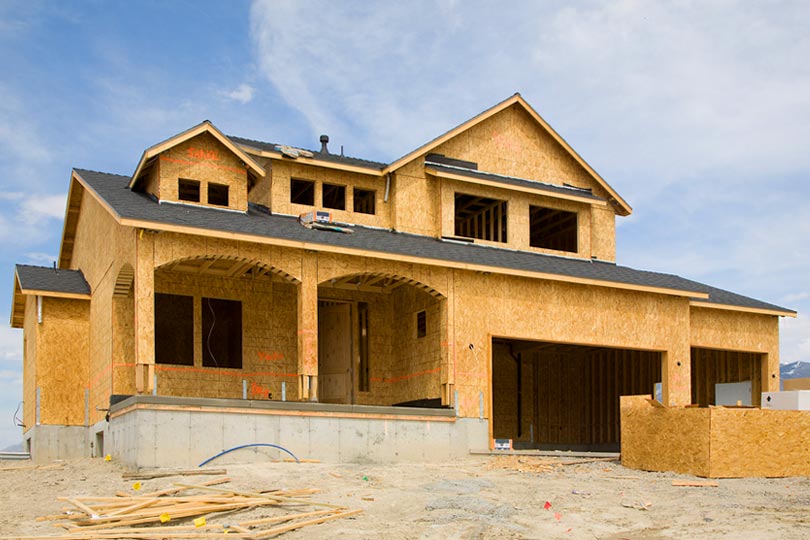Construction Loan Interest Rates For The Rest Of 2024

Those hoping to build a home from the ground up this year with interest rates closer to pre-pandemic levels are likely to be disappointed. What should borrowers expect going forward? Is it smart to delay a construction loan until the Fed cuts rates again?
Don’t Wait For Rates To Return To The Glory Days Of 5%
If you were delaying your decision to build a house on your own lot, hoping the Fed might cut rates, it may be time to rethink. Blog chatter and federal officials alike view the third quarter of fiscal year 2024 as a time to wait and see if conditions are right for further cuts.
Those cuts may not be indicated in Q3, and those waiting may be stuck waiting longer as a result. Bottom line? Rates don’t seem to be headed downward toward 5% anytime soon.
Many would do well to move forward with construction loan plans regardless of today’s mortgage rate. When the time is right, borrowers ready to commit will need to look at ways to save money on the loan outside the rate issue, but there are some things you can do to level the playing field.
Before You Apply, Work On Your Credit Reports
Work on all aspects of your credit, and don’t fixate on FICO scores alone. Better FICO scores mean a potentially more competitive offer from your lender, but your loan repayment history and credit use levels (how close you are to your credit limits) are also key.
Some borrowers review their credit and feel tempted to close old credit accounts when they approach being paid off. But if you want a construction loan, it may be better to keep those accounts open without using them much.
Why?
Because the age of your credit makes a difference, having an old credit account with a low balance is a good thing (try to reduce all your balances to 50% of the credit limit or lower). Your FICO scores may influence the mortgage loan interest rate your lender offers.
You want to be an applicant with a lower credit risk for the lender. The less risk you are to the lender, the better your credit terms may be.
A Smaller Loan?
You can save money on interest rates by starting with a lower principal balance. Making a larger down payment means paying less interest on the loan overall and for those planning on staying in the house a long time this is a smart approach.
You may not be able to get a loan to build your dream home with a 5% mortgage rate, but you can build a house with a lower principal balance via a larger down payment and save money that way.
Want More Information About One-Time Close Loans?
We have extensively researched the FHA (Federal Housing Administration) and the VA (Department of Veterans Affairs) One-Time Close Construction loan programs.
We have spoken directly to licensed lenders that originate these residential loan types in most states, and each company has supplied us with the guidelines for their products. We can connect you with mortgage loan officers who work for lenders who know the product well and have consistently provided quality service.
If you are interested in being contacted by a licensed lender in your area, please send responses to the questions below. All information is treated confidentially.
OneTimeClose.com provides information and connects consumers to qualified One-Time Close lenders to raise awareness about this loan product and to help consumers receive higher-quality service.
We are not paid for endorsing or recommending the lenders or loan originators and do not otherwise benefit from doing so. Consumers should shop for mortgage services and compare their options before agreeing to proceed.
Please note that investor guidelines for the FHA and VA One-Time Close Construction Program only allow for single-family dwellings (1 unit) – and NOT for multi-family units (no duplexes, triplexes or fourplexes).
In addition, the following homes/building styles are not allowed under these programs: Kit Homes, Barndominiums, Log Cabin Homes, Shipping Container Homes, Stilt Homes, Solar (only) or Wind Powered (only) Homes.
Please send your email request to [email protected] which authorizes OneTimeClose.com to share your personal information with one mortgage lender licensed in your area to contact you.
1. Send your first and last name, e-mail address, and contact telephone number.
2. Tell us the city and state of the proposed property.
3. Tell us your and/or the Co-borrower’s credit profile: Excellent – (680+), Good - (640-679), Fair – (620-639), or Poor- (Below 620). 620 is the minimum qualifying credit score for this product.
4. Are you or your spouse (Co-borrower) eligible veterans? If either of you is an eligible veteran, down payments as low as $0 may be available up to the maximum amount your debt-to-income ratio per VA will allow – there are no maximum loan amounts as per VA guidelines.
Most VA lenders will go up to $1,500,000 and review higher loan amounts on a case-by-case basis. If not, the FHA down payment is 3.5% up to the maximum FHA lending limit for your county.
Do you know what's on your credit report?
Learn what your score means.

September 6, 2024One-Time Close Mortgages can be an appealing option for those who want to build their dream home instead of buying someone else’s house.
Unlike traditional construction loans that involve multiple closings and complex financing stages, a One-Time Close Mortgage simplifies the process, potentially saving borrowers time and money. A One-Time Close mortgage features financing for the construction phase plus the permanent mortgage, presented as a single loan.
August 30, 2024Construction loans differ significantly from existing construction mortgages. The unique nature of these loans includes some potential challenges borrowers must be prepared to handle. What choices do you need to make about construction loans during the planning stages? What about after the construction begins?
August 21, 2024One-time close construction loans can help make the dream of a custom-built home a reality. However, construction loans are more complex than existing construction mortgages, and borrowers need all the resources they can find online when learning about their options for this type of mortgage.








